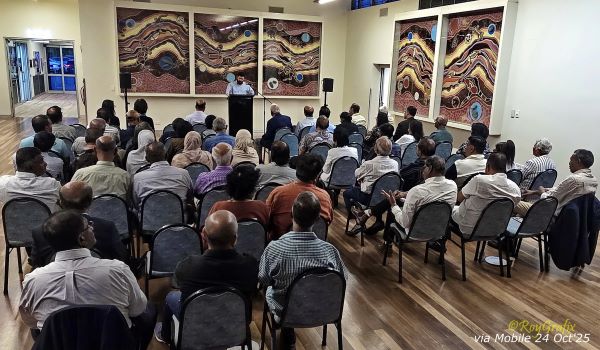U S TARIFF A SELF GOAL AND INDIA’S OPTION – N.S.Venkataraman


The tariff assault launched on the world by US President has caught every country by surprise and it looks that the world trade flow would get impacted for sometime. With US being the largest consuming country in the world, US President probably thought that he can dictate to other countries and have his way to boost American economy, get political scores or both. However, obviously, he has failed to understand that such tariff assault can be a double edged weapon. It remains to be seen who would have the last laugh.
Putting the cart before the horse:
Obviously, one of the major aims of US president in launching tariff assault is to curb import, boost domestic production that would strengthen country’s economy.
The tariff assault launched by US President should have been preceded by significant manufacturing capacity build up in US at globally competitive cost, to reduce import. While US president is talking about building manufacturing capacity in the country, he has put the cart before the horse by imposing high tariff before building such capacity.
Consuming psyche of Americans
With high per capita income in US and US citizens used to large consumption psyche, the net result is likely to be that US import would not come down but the consumers in US would pay more for the imported goods. This scenario is likely to contribute to higher cost index and inflationary tendencies in US and economic pressure on consumers. Even within a few days of tariff assault announcement, it is reported that inflation rate in US is increasing and price of commodities and goods are showing upward trend.
Inspite of tariff assault and consequent higher price to be paid by US consumers, US citizens would continue to buy imported goods to maintain their style of living.
Constraints for capacity build up in US
Capacity build up in US can take place only if the US investors would convince themselves about their capability to produce all sort of goods at globally competitive cost.
It is highly doubtful as to whether many consumer and commodity products now being used in large scale in US and imported heavily ,can be produced at competitive cost in US, compared the price of such imported goods from countries like China, India, Vietnam and so on.
For the US producers and consumers, this is essentially a make or buy decision and the decision for producers would be purely based on the economic returns only.
Indian government’s response
There have been considerable alarm in India about the highest tariff imposed by US President on Indian goods, though Modi government has reacted with remarkable calm and without knee jerk reaction.
No doubt, this tariff burden will impact India for sometime, as 17% of Indian exports go to US now. At the same time, it is seen that US President has exempted the pharma products from India exported to US from the tariff assault, since Indian pharma units meet around 40% of the generic pharma product requirements in U S at present.
Obviously, the calm reaction of Modi government to the US tariff assault reflect Modi government’s confidence that this challenge can be converted into an opportunity , with the government viewing the emerging scenario as blessing in disguise.
Today, there is realization amongst cross section of investors, industries and consumers in India that India should not expose itself to a situation such as the one created by US by imposing tariff assault or by any other country. In future. strategies have to be evolved and implemented to meet such eventuality.
Import dependence
The ground reality is that today India faces a piquant situation of high import dependence. The present level of import dependence in India for key industrial inputs is at unacceptably high level, making India highly vulnerable to international supply and price pressure.
While the consumption of various products in India is increasing due to steadily increasing growth in the economy and buying power of the people, such scenario has led to increased import dependence on vital industrial inputs and consumer products. The issue is not about building domestic market base, which is bound to expand due to the growth in economy but the problem is India’s inability to increase domestic production in tune with the domestic demand growth.
In the case of pharma products, requirements of most of Active Pharma Ingredients (API), which are key input for the production of generic drugs, are now met by import, particularly from China. While India is a big generic pharma producer, the base of the Indian pharma industry is not strong, since domestic production of APIs are inadequate. In the event of China taking a decision to curb export of APIs to India, Indian pharma units may get nearly paralysed, which would lead to alarming situation.
In the case of electric vehicles, which are now being promoted in a big way, the essential requirement is lithium ion battery cell, which are not presently produced in India. While some capacity for production of lithium ion battery cell is being built now, there is no production of several inputs and chemicals used to manufacture lithium ion battery cell in India.
EV manufacturers in India have been badly hit due to the shortage of elements and magnets. Rare earth elements are crucial for magnets that power EV motors. On April 4, 2025 China imposed restriction on export of several rare earth elements and magnets. Apart from EVs, these magnets are also extensively used in the defence, energy and automotive sectors in India.
While semiconductor industry is sought to be built up in the country, one of the important inputs for semiconductor industry is the high purity chemicals, which are not presently produced in India. Several inputs for solar industry are not produced in India.
India imports large quantity of speciality fertilizers used for high value crops like fruits and vegetable from China.
In the case of chemical industry, India import entirely or largely several bulk chemicals such as methanol (import more than 3 million tonne per annum), PVC (import more than 3 million tonne per annum), styrene (import more than 1 million tonne per annum), citric acid (import more than 1 lakh tonne per annum). polycarbonate resin (import more than 2 lakh tonne per annum) and several others. List of such chemicals which are imported in large scale are uncomfortably long.
To cut the long story short, it can be said that the ground reality is that any curtailing of import of key industrial inputs will seriously and adversely impact the Indian production units, which would affect India’s economic growth.
Export dependence
Reasonable level of export dependence cannot be faulted and certainly , there is need for targets for export, as export trade is necessary to sustain the economic growth.
The export growth can be achieved only by domestic capacity build up , which would in turn reduce the import dependence.
Further, higher export target has to be accompanied by increasing domestic consumption, which would be a “shock absorber” in the event of tariff assault from other countries, that would affect level of export from India. India is facing such situation now and suffering due to excessive export dependence, after the imposition of tariff assault by US President.
Technology dependence
Research and Development and innovation efforts are the corner stone for sustained growth of national economy, to curb import and boost export.
The domestic capacity build up has considerably suffered in the past due to lack of strength in domestic technology front and need to buy technology from abroad at exhorbitant cost on many occasions. It is seen that in the case of many products already produced in India, repeatedly overseas technology is sought for expanding capacity and building new capacity.
There are several products for which overseas technology acquisition has become difficult due to lack of readiness to share updated technology from other countries.
In such circumstances, the crux of the issue is the challenge in building domestic research and development capability.
The ball is clearly in the court of technologists in India who need to considerably strengthen the domestic technology base.
There is no need for lack of confidence in boosting domestic technology, as India has the potential capability to achieve big leap forward in technology front. The research and development achievements in space technology, atomic energy and the remarkable speed with which medicines were developed in India to treat Covid crisis, certainly speak volume about high capability of Indian scientists and technologists.
Then ,what is the problem and what is bottle neck ?
Government is doing it’s job and technologists / project promoters need to respond
In recent time ,Government of India has announced several incentives, increased fund allotment for grant, announced Production Linked Incentive(PLI ) scheme and so on to boost domestic research and domestic capacity build up.
Government’s initiatives to boost production of green hydrogen, promote renewable energy projects and in several other areas by removing the bottle necks are praise worthy . The government can do only so much.
Unfortunately, the efforts putforth by public and private sector industries to boost R & D is inadequate. Most of the time, these industries are complaining about lack of adequate government funds provided for R & D. However, ground reality is that the percentage of amount spent by the industries for R & D in their total profit is minimal. The fact is that a number of industrial units are not involving themselves in basic research to develop appropriate process technology but using R & D labs like glorified quality control set up.
It appears that Indian project promoters are more inclined to buy technology from abroad at whatever cost, instead of striving to support and develop technology domestically.
There are chain of CSIR laboratories funded by government to promote research in the country. The moot question is as to whether the research achievements are commensurate with the money invested in CSIR labs by the government.
It is a matter of concern that several CSIR labs are diverting partly as academic institution to turn out graduates and post graduates. In this process, focus of the CSIR labs get diluted to some extent and scientists are sent to teach instead of doing research. In such circumstances, it is gratifying to note that agricultural minister in Government of India has now directed the Indian Agricultural Research Institute (ICAR) to discontinue UG course in ICAR research centres. This move should be extended to all the CSIR labs in the country.
In recent times, number of Indian Institute of Technologies have been started in India. There are well established IIT’s in Chennai, Mumbai, Delhi, Karaghpur, and Kanpur, which have been functioning for several years and doing good work. However, these five IIT’s should be asked to focus entirely on research and development activities rather than turning out graduate engineers. Today , there are hundreds of engineering colleges all over the country and therefore, these five IITs should involve themselves in innovative efforts rather than teaching.






















